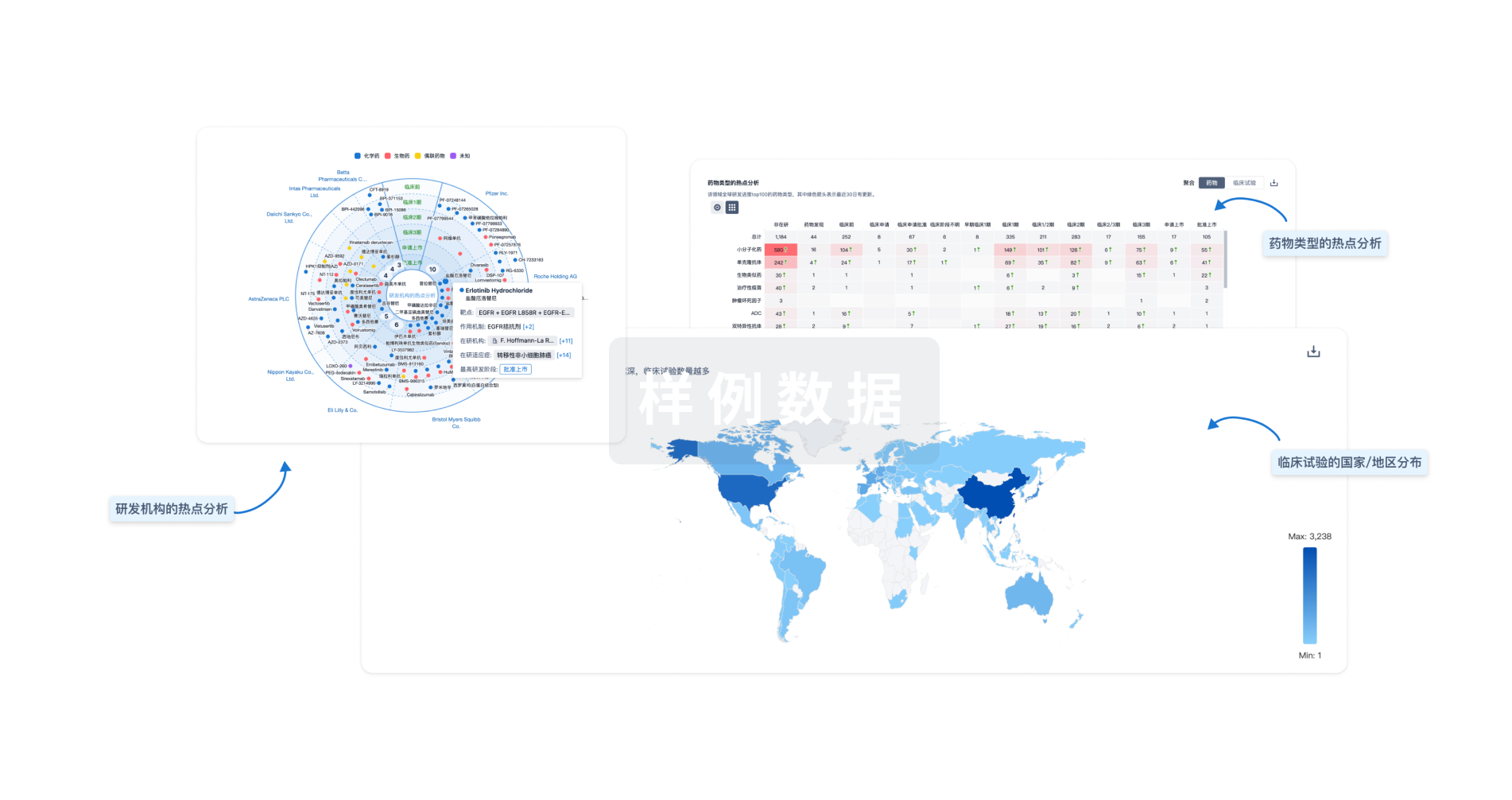预约演示
更新于:2025-05-07
Chronic thromboembolic pulmonary hypertension
慢性血栓栓塞性肺动脉高压
更新于:2025-05-07
基本信息
别名 CTEPH、CTEPH、Chronic Thromboembolic Pulmonary Hypertension + [9] |
简介 The persistence of thromboemboli in the form of organized tissue obstructing the pulmonary arteries, leading to an increase in pulmonary vascular resistance and progressive right heart failure. |
关联
13
项与 慢性血栓栓塞性肺动脉高压 相关的药物靶点- |
作用机制 磁共振成像增强剂 |
在研机构 |
原研机构 |
最高研发阶段批准上市 |
首次获批国家/地区 美国 |
首次获批日期2022-12-23 |
作用机制 PGI2 receptor激动剂 |
最高研发阶段批准上市 |
首次获批国家/地区 美国 |
首次获批日期2015-12-21 |
作用机制 ETA拮抗剂 [+1] |
最高研发阶段批准上市 |
首次获批国家/地区 美国 |
首次获批日期2013-10-18 |
227
项与 慢性血栓栓塞性肺动脉高压 相关的临床试验ChiCTR2500099401
Effect of discontinuation of riociguat on right heart function in patients with CTEPH after combination therapy
开始日期2025-03-31 |
申办/合作机构 |
NCT06922240
Effect of Discontinuation of Riociguat on Right Heart Function in Patients With CTEPH After Combination Therapy
Riociguat and balloon pulmonary angioplasty (BPA) are established standard-of-care interventions for inoperable chronic thromboembolic pulmonary hypertension (CTEPH) with comparable evidence levels. However, the optimal combined treatment strategy remains unclear. Specifically, there is no consensus on whether riociguat should be continued long-term after achieving hemodynamic stability with BPA. Additionally, the long-term effects of riociguat discontinuation on right ventricular (RV) structure and function remain poorly characterized, particularly due to the lack of comprehensive noninvasive evaluations integrating cardiac magnetic resonance (CMR) and echocardiography. This prospective study aims to determine the hemodynamic impact of riociguat discontinuation in inoperable CTEPH patients who have achieved BPA treatment endpoints using right heart catheterization (RHC). Evaluate RV remodeling and functional changes after riociguat cessation through multimodal noninvasive imaging (CMR, echocardiography). Assess safety outcomes and identify potential rebound pulmonary hypertension or decompensated RV dysfunction associated with riociguat withdrawal.
开始日期2025-03-21 |
申办/合作机构 |
NCT06865326
Early Detection of Chronic Thromboembolic Pulmonary Hypertension in Patients After Acute Pulmonary Embolism
The project is a national, prospective, multicenter, interventional pilot project of screening CTEPH in pacients after APE in the Czech Republic. The main goal of the project is to methodically prepare, implement and evaluate a pilot project that will verify the suitability of the proposed procedure of early detection of Chronic tromboembolic pulmonary hypertesion in such a way as to ensure the maximum positive impact on the health of the population and high cost-effectiveness of the whole process.
开始日期2025-02-28 |
申办/合作机构- |
100 项与 慢性血栓栓塞性肺动脉高压 相关的临床结果
登录后查看更多信息
100 项与 慢性血栓栓塞性肺动脉高压 相关的转化医学
登录后查看更多信息
0 项与 慢性血栓栓塞性肺动脉高压 相关的专利(医药)
登录后查看更多信息
3,990
项与 慢性血栓栓塞性肺动脉高压 相关的文献(医药)2025-06-01·European Journal of Radiology
Non-contrast dual-energy CT iodine quantification for lung injury characterization after balloon pulmonary angioplasty
Article
作者: Serrano, Elena ; Domenech-Ximenos, Blanca ; Blanco, Isabel ; Cornellas, Llúria ; Páez-Carpio, Alfredo ; Vollmer, Ivan ; Gómez, Fernando M ; Barberà, Joan A
2025-05-01·Thrombosis Research
Metabolomics profiling in venous thromboembolism and its chronic sequelae - A systematic review
Article
作者: Roshanshad, Amirhossein ; Amirsardari, Zahra ; Khalili, Asal ; Ahadi, Shana ; Malakootian, Mahshid ; Sharafi, Mohammadhasan ; Mehrizi, Reza
2025-05-01·Clinical Radiology
Cone beam CT pulmonary angiography in balloon pulmonary angioplasty for chronic thromboembolic pulmonary hypertension during the program initiation period
Article
作者: Páez-Carpio, A ; Puig, J ; Barberà, J A ; Gómez, F M ; Blanco, I ; Zarco, F X ; Serrano, E ; Vollmer, I
41
项与 慢性血栓栓塞性肺动脉高压 相关的新闻(医药)2025-04-17
·九洲药业
·Vanrafia可以无缝添加到IgAN的支持性治疗中,并用作基础疗法,无需REMS(风险评估缓解策略)计划;·Ⅲ期数据显示,与安慰剂相比,Vanrafia使蛋白尿减少了36.1%(p<0.0001),第6周即出现改善并持续至第36周,且安全性良好;·IgAN是一种进行性罕见肾脏疾病;高达50%的持续性蛋白尿患者在诊断后的10至20年内会发展为肾衰竭。Jiuzhou News 近日诺华宣布,美国FDA已加速批准Vanrafia®(atrasentan),一种强效选择性内皮素A(ETA)受体拮抗剂,用于减少有快速疾病进展风险的原发性免疫球蛋白A肾病(IgAN)成人患者的蛋白尿。这通常定义为尿蛋白与肌酐比率(UPCR)≥1.5g/g。Vanrafia是一种每日一次的非甾体口服治疗药物,可添加到支持治疗中,包括肾素-血管紧张素系统(RAS)抑制剂,可联合或不联合钠-葡萄糖协同转运蛋白-2(SGLT2)抑制剂。斯坦福大学医学中心肾病学教授、肾小球疾病中心主任、医学博士、美国内科医师学会院士Richard Lafayette表示:“今天的批准对患有IgA肾病的患者来说是一个重要的里程碑,它提供了一种可以无缝整合到他们现有治疗计划中的新选择,无需REMS。Vanrafia是一种选择性ETA受体拮抗剂,可有效降低蛋白尿,这是IgAN的主要风险因素。尽早采取果断行动对于帮助改善这些经常进展为肾衰竭的患者的预后至关重要。”关于IgANIgAN是一种进行性、罕见的肾脏疾病,免疫系统会攻击肾脏,常导致肾小球炎症和蛋白尿。美国每年每百万人中就有近13人被诊断出患有该病,它是最常见的自身免疫性肾脏疾病之一,并且每个人的病症都是独一无二的。在确诊后10至20年内,高达50%的持续性蛋白尿IgAN患者会发展为肾衰竭,通常需要维持性透析和/或肾移植,并且对治疗的反应也可能有所不同。具有不同作用机制的有效靶向疗法可以帮助医生为患者选择最合适的治疗方法。关于ALIGN研究ALIGN研究(NCT04573478)是一项全球性、随机、多中心、双盲、安慰剂对照的Ⅲ期临床试验,比较了Vanrafia与安慰剂对有肾功能进行性丧失风险的IgAN患者的疗效和安全性。总共有340名经活检证实的IgAN患者,尽管接受了优化的RAS抑制剂治疗,基线总蛋白尿仍≥1g/天,随机分配接受每日一次口服Vanrafia(0.75 mg)或安慰剂治疗约132周。患者继续接受最大耐受和稳定剂量的RAS抑制剂作为支持治疗(除非他们无法耐受RAS抑制剂治疗)。另外还招募了64名接受SGLT2抑制剂治疗至少12周的患者。中期分析的主要疗效终点是蛋白尿(肾脏损伤标志物)的变化,以24小时UPCR测量从基线到36周的变化。次要和探索性目标包括评估从基线到136周的肾功能变化(以eGFR测量),以及安全性和耐受性。支持批准的ALIGN研究数据在正在进行的Ⅲ期ALIGN研究中,与安慰剂相比,接受Vanrafia联合RAS抑制剂治疗的患者的蛋白尿减少了36.1%(p<0.0001),具有临床意义和统计学意义,并且效果早在第6周就已显现,并持续到第36周。在主要研究队列1中,Vanrafia对UPCR的影响在包括年龄、性别、种族和基线疾病特征(如eGFR和蛋白尿水平)在内的亚组中是一致的。在另一组同时接受RAS抑制剂和SGLT2抑制剂治疗的患者中也观察到了类似的Vanrafia治疗效果(与安慰剂相比,UPCR减少了37.4%)。ALIGN研究表明,Vanrafia具有与之前报告的数据一致的良好安全性。接受Vanrafia治疗的患者中≥2%报告的不良事件(发生率高于安慰剂组)包括外周水肿、贫血和肝转氨酶升高。由于一些内皮素受体拮抗剂会导致氨基转移酶升高、肝毒性和肝功能衰竭,因此临床医生应在开始使用Vanrafia之前以及在治疗期间出现临床指征时进行肝酶检测。Vanrafia可能导致严重的出生缺陷。Vanrafia不需要REMS计划。小结自1988年内皮素-1(ET-1)被鉴定为强效血管活性肽以来,已描述了三种内皮素同工型:ET-1、ET-2和ET-3。这三种同工型ET作用于两种G蛋白偶联受体:ETA和ETB。ETA受体优先于ET-1和ET-2结合,而ETB受体以相同的亲和力与所有3种肽结合。ETA受体拮抗剂最早获批用于治疗肺动脉高压,如ETA/ETB受体拮抗剂bosentan在2001年获批,ETA受体拮抗剂ambrisentan在2007年获批和ETA/ETB受体拮抗剂macitentan在2013年获批。中间也探索过许多适应症,如特发性纤维化、系统性硬化症、急性高山症、先天性心脏病、慢性血栓栓塞性肺动脉高压和前列腺癌等,但几乎都以疗效不足而导致试验失败。直到2023年,美国FDA批准了ETA/血管紧张素II受体拮抗剂sparsentan用于治疗IgA肾病,ETA受体类药物才从传统的心血管疾病领域拓展到肾病领域。但是这4款药物由于安全性问题,都受到了REMS的严厉监管。如bosentan里的黑框警告包括严重肝损伤和生育致畸风险,ambrisentan和macitentan有生育致畸风险,sparsentan则有严重肝损伤和胎儿致畸风险。但是这次最新获批的ETA受体拮抗剂atrasentan无需REMS。另一方面sparsentan和atrasentan的3期临床数据显示,它们的第36周UPCR相对于基线水平下降的程度相似,都在40%左右,如sparsentan相对于安慰剂组为-41%,atrasentan相对于安慰剂组为-36%。不难看出,后来者居上的atrasentan凭借优异的安全性,相信会快速占领原本属于sparsentan的市场份额。▲临床在研ETA、ETA/ETA受体拮抗剂▲ETA、ETA/ETA受体拮抗剂的结构式参考资料1.https://www.novartis.com/news/media-releases/novartis-receives-fda-accelerated-approval-vanrafia-atrasentan-first-and-only-selective-endothelin-receptor-antagonist-proteinuria-reduction-primary-iga-nephropathy-igan2.https://www.mdpi.com/2077-0383/9/3/8243.https://www.kireports.org/article/S2468-0249(23)01402-X/fulltext4.https://journals-lww-com.libproxy1.nus.edu.sg/jhypertension/abstract/1988/12040/a_novel_peptide_vasoconstrictor,_endothelin,_is.56.aspx5.https://www-thelancet-com.libproxy1.nus.edu.sg/journals/lancet/article/PIIS0140-6736(23)00569-X/abstract6.https://www-nejm-org.libproxy1.nus.edu.sg/doi/full/10.1056/NEJMoa2409415免责声明本公众号注明原创的内容权利均属九洲药业所有,未经授权,不得擅自使用或许可他人使用。如需获得授权,请和九洲药业提前联系。已获得授权的,应在授权范围内使用,并注明来源且不得再全部或部分转授权他人。本公众号对转载、分享的内容、陈述、观点判断保持中立,不对所包含内容的合法性、准确性、可靠性或完善性提供任何明示或暗示的保证,该等内容版权归原作者所有,仅供学习参考之用,若对转载、分享的内容有任何权利疑问,烦请联系九洲药业。
临床3期临床结果临床2期加速审批
2024-11-28
·赞Med
点击上方“蓝字”关注我们吧!
慢性阻塞性肺疾病全球创议(GOLD)是慢性阻塞性肺疾病(COPD)诊断、治疗与预防在全球范围内的标准。GOLD 2025是GOLD 2023的第二次更新,于11月11日重磅更新,新增164篇参考文献。本文选取GOLD 2025的修改和更新要点内容进行整理,以飨读者。
GOLD 2025修订版本主要更新了15点:
i. 删除第六章“COVID-19与COPD”
ii. 新增三幅图表:
图2.6吸入支气管舒张剂前/后的肺功能检查;
图3.22当前使用LABA+ICS患者的管理;
图5.1肺动脉高压合并慢阻肺(PH-COPD)患者的可治疗特征及其管理建议
iii. 修订或更新以下图表:
图3.6稳定期COPD患者的疫苗接种;
图3.9随访期药物治疗,新增新药恩赛芬汀和度普利尤单抗的相关信息;
图3.18 COPD的维持用药,纳入恩塞芬汀和度普利尤单抗;
图4.11降低COPD急性加重的干预措施,新增度普利尤单抗
iv. 肺功能轨迹:进展与衰老章节中新增了一段内容和参考文献,包括一个链接到欧洲呼吸学会(ERS)网站上用于监测随时间变化的肺量计指标的免费软件(第11页)
v. 新增微生态失衡章节(第17页)
vi. 更新肺功能检查的相关信息,包括更全面的正常值低限(LLN)值、Z值和参考值信息,并新增图2.6“吸入支气管舒张剂前/后的功能检查”(第27页)
vii. 新增COPD的心血管风险相关内容(第38页)
viii. 更新胸部CT相关内容,包括肺气肿、肺结节、气道病变以及COPD合并症的内容(第42页)
ix. 新增“气候变化与COPD”的相关内容(第50页)
x. 根据美国疾病控制与预防中心(CDC)的最新指导方针,更新针对COPD患者的疫苗接种建议(第52页)
xi. 更新随访期药物治疗及相应的图表(图3.9)(第57页)
xii. 新增肺康复、健康教育与自我管理的实施方式:面对面vs远程(第67页)。远程患者随访内容已从COVID-19章节移至此部分,COPD随访清单已移至附录(第135页)
xiii. 修订ICS撤药内容,并新增图3.22“当前使用LABA+ICS治疗的患者管理”(第88页)
xiv. 新增磷酸二酯酶3和4(PDE3和PDE4)抑制剂,以及“其他有助于降低急性加重的药物”,纳入恩塞芬汀和度普利尤单抗的最新证据(第91页)
xv. 纳入肺动脉高压的内容,并新增相应图5.1(第126页)
1.删除第六章“COVID-19与COPD”
GOLD 2025版包含章节如下:
第1章:定义和概述
第2章:诊断和评估
第3章:COPD的预防和管理
第4章:急性加重的管理
第5章:COPD与合并症
2.新增三幅图表
A.新增图2.6吸入支气管舒张剂前/后的肺功能检查
(注:FEV1:第一秒用力呼气容积;FVC:用力肺活量)
B.新增图3.22当前使用LABA+ICS患者的管理
C.图5.1慢阻肺病合并肺动脉高压(PH-COPD)患者的可治疗特质及管理建议
3.修订或更新以下图表
A.图3.6稳定期COPD患者的疫苗接种
B.图3.9随访期药物治疗,新增新药恩赛芬汀和度普利尤单抗的相关信息
C.图3.18 COPD的维持用药,纳入恩塞芬汀和度普利尤单抗
D.图4.11降低COPD急性加重的干预措施,新增度普利尤单抗
4.肺功能轨迹:进展与衰老章节中新增了一段内容和参考文献,包括一个链接到欧洲呼吸学会(ERS)网站上用于监测随时间变化的肺量计指标的免费软件(第11页)
由于各种因素,一个人在其一生中可能会经历多种不同的肺功能变化轨迹,这些轨迹可能低于或高于正常的肺功能水平。现在已经得到广泛认同的是,那些肺功能轨迹高于正常的个体,往往与更健康的衰老减缓过程相关,而那些低于正常水平的轨迹,则与呼吸系统、心血管系统和代谢类疾病的发生率和发病率增高以及早逝有紧密联系。从这个角度来看,肺量计检查可以被视为一个衡量整体健康状况的指标。基于此,GOLD 2025推荐欧洲呼吸学会(ERS)网站下载的免费软件(Lung Function Tracker软件,https://gli-calculator.ersnet.org/lung_tracker/),用于长期监测肺功能。
5.新增微生态失衡章节(第17页)
已有研究发现慢阻肺病患者的多个部位(包括气道)存在微生物群平衡的破坏,亦即微生态失衡。多种风险因素如吸烟和早产会改变黏膜免疫,进而影响肠道及气道微生物组,两者通过“肠-肺轴”相互作用。微生态失衡与COPD的发生及其特征(如急性加重频率)相关,可能通过改变黏膜防御和刺激肺部炎症来促进COPD的发展。病毒感染和急性加重期间,慢阻肺病微生物群特征会发生变化,且抗生素和口服/吸入糖皮质激素会引发不同的改变。尽管观察结果表明微生态失衡可能在COPD的发生发展中起重要作用,但目前尚缺乏纵向数据和干预性研究,仍需进一步研究以确定因果关系,并探索其在预后、诊断或治疗中的潜在应用。
6.更新肺功能检查的相关信息,包括更全面的正常值低限(LLN)值、Z值和参考值信息,并新增图2.6“吸入支气管舒张剂前/后的功能检查”(第27页)
吸入支气管舒张剂前的肺功能测试可以作为初步测试,以评估有症状的患者是否存在气流阻塞(图2.6)。如果吸入支气管舒张剂前肺功能测试未显示出阻塞,则无需进行吸入支气管舒张剂后的肺功能,除非临床高度怀疑COPD,如低FEV1和临床症状多。这类患者建议行支气管舒张试验,其结果可能因容积效应(支气管舒张剂引起的FVC增加)而发生变化,并需要进一步的检查来探究患者出现症状的原因,并进行后续随访,包括在一段时间后重复进行肺功能测试。如果吸入支气管舒张剂前的肺功能已经显示存在气流受限,则应使用吸入支气管舒张后的测量值来确认COPD诊断。吸入支气管舒张剂前FEV1/FVC显示阻塞,但吸入支气管舒张剂后不显示阻塞的个体已被证明未来发展成COPD的风险增加,应密切随访。
GOLD诊断COPD时,采用吸入支气管舒张剂后FEV1/FVC小于0.7。该标准简单且不依赖于参考值,被广泛应用于临床试验,这些试验构成了治疗建议的证据基础。需要注意的是,使用固定FEV1/FVC比值(小于0.7)来定义气流阻塞可能会导致老年人过度诊断COPD,而在年轻成人中,尤其是轻度疾病情况下,可能会导致1%左右的诊断不足。对于怀疑患有COPD的年轻成人(小于50岁),如果反复测量的固定比值大于等于0.7,可以与预测的LLN值进行比较或使用Z值()来帮助决定如何管理这些少数患者。
LLN值基于正态分布,将健康人群中底部的5%分类为异常。从科学或临床角度来看,很难确定哪种标准能带来最佳的COPD诊断准确性。使用LLN的一个等效方法是使用Z值(观察值与测量均值之差与标准差的比值)。Z分数为-1.645相当于第5个百分位数。全球肺功能创议(GLI)比较了使用Z值和固定比率解释肺功能测试结果,并发现它们对一些患者的分类有所不同,但这种差异是否具有临床相关性尚不清楚。
7.新增COPD的心血管风险相关内容(第38页)
COPD患者常伴有心血管疾病,反之亦然,但医生往往只关注其专长领域(肺或心脏),容易忽视这一点。COPD和心脏病的适当治疗对患者的预后至关重要。需区分临床稳定期患者与COPD急性加重期(ECOPD)患者。
临床稳定期COPD患者心血管疾病(CVD)发病率较高,包括高血压、冠心病、心衰和心律失常等,是COPD患者的主要死因,尤其是轻中度气流阻塞患者,但这些疾病常被忽视,未得到及时治疗。COPD与CVD共存机制复杂,包括共享风险因素、COPD导致的持续性全身性炎症、肺换气异常、肺过度充气以及运动性呼吸困难减少体力活动等。此外,CVD也会通过多种机制,包括由于心肌收缩力异常导致的肺泡和支气管水肿、毛细血管后肺动脉高压以及骨骼肌氧输送减少导致的体力活动减少等,加剧COPD的病情。因此,应对COPD患者是否存在重大CVD及检查并治疗。值得注意的是,在普通人群中使用现有的心血管风险评分可能低估COPD患者的CVD风险,同时纳入肺功能指标(如FEV1)可能提高标准心血管风险评分的预测价值,这些需要都进一步研究。
此外,COPD急性加重期心血管风险显著增加,需重视鉴别诊断、监测CVD标志物,并根据CVD指征使用β受体阻滞剂和他汀类药物。预防ECOPD不仅因其对患者预后、肺功能和健康状况的影响,还因可降低急性加重期间及之后的心血管风险。
8.更新胸部CT相关内容,包括肺气肿、肺结节、气道病变以及COPD合并症的内容(第42页)
胸部CT能揭示COPD的结构和病理生理异常,有助于更深入地了解疾病的表型、严重程度和结局。CT可评估肺气肿的分布和严重程度,辅助外科肺减容术(LVRS)或支气管内瓣膜置入的决策。定量分析肺气肿的范围、位置和肺裂完整性在支气管内瓣膜治疗决策中越来越常用。CT评估也常用于评估伴有明显肺过度充气的COPD患者(FEV1为15%-45%)。CT低衰减区(密度≤-950HU的百分比,%LAA-950)占比是客观量化肺气肿的最常用方法,与肺气肿的病理表现、气流阻塞的生理测量以及症状、急性加重、肺癌风险、疾病进展和死亡风险增加相关。
虽然CT不是COPD诊断的必需检查,但越来越多COPD患者接受CT检查,以评估胸部X光发现的肺结节或合并的肺部疾病。CT还能显示COPD相关的气道异常,如支气管扩张症(约30%的COPD患者CT可见),与症状加重频率和死亡率增加相关。此外,CT还能评估COPD相关合并症,如冠状动脉钙化、肺动脉增宽、骨密度、肌肉量、肺间质异常、食管裂孔疝和肝脂肪变性。总之,对于COPD患者,若存在持续恶化、症状与肺功能检测结果不符或难以通过药物治疗控制、FEV1低于预测值的45%并伴有显著肺过度充气和气体潴留,或符合肺癌筛查标准,应考虑行胸部CT检查。
9.新增“气候变化与COPD”的相关内容(第50页)
气候变化加剧了高温、严寒、洪水、干旱、飓风、雷暴、野火和沙尘暴等极端天气事件的频率、强度和地理分布。极端高温和低温都会导致超额死亡,且极端高温的致死影响随热浪持续时间增加而增加。COPD患者受极端温度影响,死亡风险增加,且低温风险高于高温。高温还增加COPD患者住院风险,低温则增加病情恶化风险。室内温湿度受建筑类型、保温、供暖等因素影响,且与室外条件差异大。温度还会影响空气质量,某些污染物与温度对COPD住院和急诊有协同作用。COPD患者应保持卧室温度适宜,避免极端温度影响,并妥善选择和处置吸入装置以减少对气候的影响。
10.根据美国疾病控制与预防中心(CDC)的最新指导方针,更新针对COPD患者的疫苗接种建议(第52页)
前文已述。
11.更新随访期药物治疗及相应的图表(图3.9)(第57页)
对于已使用二联长效支气管舒张剂的COPD患者,如仍有呼吸困难,可考虑加用恩塞芬汀。对于已使用 LABA+LAMA+ICS仍有急性加重的COPD患者,如血嗜酸性粒细胞≥300个/μL且有慢性支气管炎症状,考虑加用度普利尤单抗。
12.新增肺康复、健康教育与自我管理的实施方式:面对面vs远程(第67页)。远程患者随访内容已从COVID-19章节移至此部分,COPD随访清单已移至附录(第135页)
新冠疫情及社交距离要求迫使医疗系统采用远程解决方案和远程医疗服务,以确保适当护理的提供。其中,COPD领域研究最多的远程医疗服务是肺康复和自我管理干预。肺康复在COPD远程医疗领域拥有最高质量的研究,包括明确的运动训练计划,并将远程康复与常规护理和/或基于中心的康复进行了比较,后者在2021年Cochrane综述中被确立为金标准。
临床指南指出,远程康复可实现与面对面、基于中心的肺康复相似的临床效果,建议为稳定期慢性呼吸系统疾病患者,尤其是COPD患者提供基于中心或远程的肺康复选择。有效的肺康复计划关键在于纳入下肢耐力训练。远程康复仍需面对面评估以完成全面的康复前评估,且需适当培训和基础设施。但考虑到缺乏训练有素的人员和技术吸引力,需确保远程肺康复不被滥用。
2022年Cochrane综述显示,自我管理干预可提高生活质量并减少住院。远程教育和自我管理有潜力减轻医务人员的工作负担,改变患者监测和医疗服务提供方式。然而,远程自我管理仍存在许多未解问题和重要局限性,目前尚无研究证明远程支持自我管理相比不使用信息通信技术的自我管理干预有额外益处。
13.修订ICS撤药内容,并新增图3.22“当前使用LABA+ICS治疗的患者管理”(第88页)
GOLD2024将“ICS撤药”内容单列,而GOLD2025将该内容整合至“当前使用LABA+ICS治疗的患者管理”部分。在使用LABA+ICS治疗的患者中进行的ICS撤药研究结果显示,停用ICS对肺功能、症状和/或急性加重风险没有影响。最近,三项大型观察性队列研究在撤除三联疗法中ICS的患者中显示了有争议的结果。两项研究表明撤除ICS并未导致加重或肺功能恶化,而另一项来自于西班牙的一个行政数据库的回顾性数据显示,撤除ICS与急性加重、医疗资源利用增加和成本增加有关。这些差异可能是由于方法学的差异(包括混杂因素的存在)所导致。对于那些发展为重症肺炎或有真菌或分枝杆菌感染风险增加的COPD患者,应考虑撤除ICS以降低感染风险。血嗜酸粒细胞计数≥300个/μL是撤除ICS不良后果风险增加的指标。
14.新增磷酸二酯酶3和4(PDE3和PDE4)抑制剂,以及“其他有助于降低急性加重的药物”,纳入恩塞芬汀和度普利尤单抗的最新证据(第91页)
恩塞芬汀是一种新型、首创的吸入式PDE3和PDE4双重抑制剂,具有抗炎和支气管舒张作用。它通过调节环磷酸鸟苷水平,使平滑肌松弛。在平行对照III期试验中,使用标准雾化器给予的恩塞芬汀显著改善肺功能并减轻呼吸困难,但对生活质量的影响不一致。研究提示可降低急性加重率,但在患者群体的选择上,并未特意挑选急性加重风险较高的患者。此外,研究未评估恩塞芬汀在LABA+LAMA或LABA+LAMA+ICS治疗基础上的疗效,难以确定其在治疗中的地位。研究未发现安全性或耐受性问题。恩塞芬汀目前仅在美国可用。
度普利尤单抗是一种全人源单克隆抗体,可阻断白介素-4和白介素-13的共享受体组分。在两项大型III期双盲随机试验中,患有COPD、慢性支气管炎、上一年度尽管接受LABA+LAMA+ICS治疗但仍发生两次或两次以上中度急性加重或至少一次重度急性加重病史,且血嗜酸粒细胞计数≥300个/μL的患者,在接受度普利尤单抗治疗后,52周内急性加重次数减少,肺功能改善,健康状况好转。
15.纳入肺动脉高压的内容,并新增相应图5.1(第126页)
肺动脉高压(PH)指平均肺动脉压(mPAP)高于20 mmHg,可通过右心导管检查进行评估。PH分为五类:动脉性PH(PAH,第1组)、与左心疾病相关的PH(第2组)、与肺部疾病和/或缺氧相关的PH(第3组)、慢性血栓栓塞性PH(CTEPH,第4组)以及病因不明和/或多因素PH(第5组)。COPD患者可出现各类PH。COPD患者并发PH需仔细分析导致mPAP升高的可能机制,以确定可治疗的PH-COPD特征。
CTEPH是40岁以上COPD患者PH的可治疗原因。约25%-30%的COPD患者存在轻度PH,多为第3组或第2组(伴显著左心疾病)。COPD并发PH会增加医疗资源使用、住院率,预后不良。约5%的COPD患者并发重度PH,预后差,表现为轻度至中度气流受限、无或轻度高碳酸血症、一氧化碳弥散量(DLco)低、循环运动受限,称为“肺血管表型”。
超声心动图是评估PH及其严重程度的最佳无创工具。COPD并发PH患者应转诊至有呼吸系统疾病诊疗经验的PH中心,接受右心导管检查和多学科评估以指导治疗。COPD并发PAH应遵循2022年欧洲心脏病学会/欧洲呼吸学会(ESC/ERS)指南,首选初始单药治疗,未达治疗目标则采用序贯联合治疗。COPD并发CTEPH需多学科团队评估,考虑肺动脉内膜切除术、血管成形术和/或PH药物治疗。非重度PH-COPD不建议使用PAH药物,重度PH-COPD建议个体化治疗,常用磷酸二酯酶5抑制剂,但PERFECT试验显示吸入曲前列尼尔无临床疗效且存在不良事件,需更多设计良好的随机对照试验指导PH-COPD的PAH药物治疗。
总结
GOLD将继续与专业引领者和其他感兴趣的医疗专业人员合作,政府、公共卫生领域、医护人员和公众应注意COPD,提高对COPD的认识,并制定早发现、早预防和管理的方法。
参考文献:
GLOBAL STRATEGY FOR PREVENTION, DIAGNOSIS AND MANAGEMENT OF COPD: 2025 Report. https://goldcopd.org/2025-gold-report/
提示:本材料仅供医疗卫生专业人士进行医学科学交流,不用于推广目的。
疫苗临床结果临床3期
2024-10-13
十一假期结束的第一周,医药圈大事不断。
政策层面,先是国家药监局鼓励药企内部举报,最高奖100万元;市场监管总局又公开征求医药企业防范商业贿赂风险合规指引意见。可以预见,接下来或许又将有一场合规风暴在医药行业掀起。
大型制药企业的人事变动也在本周登上行业热搜,CEO张英男的离职,让曾经的中国连锁药房第一股海王星辰再度走到聚光灯下。面对如今医药零售行业大变革,海王星辰将要走向何方,被业界热议。另一则继“国药系”一系列变动消息后,国药投资董事长也在本周官宣了变动,梁红军卸任,英军接任。
而在资本市场层面,随着三大指数的高开,也让医药行业的投资人燃起乐观情绪,期待更多资金流入。不过伴随多家药企发布增持/减持公告,也让行业担心这股浪潮能维持多久。
政策动态
市场监管总局官网公开征求《医药企业防范商业贿赂风险合规指引(征求意见稿)》意见:10月11日,市场监管总局官网发出关于公开征求《医药企业防范商业贿赂风险合规指引(征求意见稿)》意见的公告,意见反馈截止日期为2024年10月20日。共四章49条,各章分别为总则、医药企业防范商业贿赂风险合规管理体系建设、医药企业商业贿赂风险识别与防范、医药企业商业贿赂风险处置。
国家药监局鼓励内部举报药品、医疗器械质量安全重大违法行为:10月10日,国家药监局发布《关于对药品、医疗器械质量安全内部举报人举报实施奖励的公告(征求意见稿)》。其中指出,指出,内部举报人包括相关企业、单位等内部员工,以及相关知情人,即一年内与企业、单位等解除劳动合同的员工,或与企业、单位等存在药品、医疗器械质量安全相关业务联系的人员。国家药监局还明确,每起案件的举报奖励金额上限为100万元。
上海卫健委等14部门发布医疗反腐要点:10月9日,上海市卫健委等14部门联合印发《上海市2024年纠正医药购销领域和医疗服务中不正之风工作要点》,为卫生健康事业高质量发展提供保障。医药领域是维护人民群众健康的主阵地。全文共5部分18条内容,主要涉及规范医药生产流通秩序、集中整治群众身边不正之风和腐败问题、坚决纠治行业乱象、切实维护医保基金安全、深化巩固集中整治工作成效等。
广东出台行动方案推动生物医药产业高质量发展:10月9日,广东对外印发《关于进一步推动广东生物医药产业高质量发展的行动方案》(以下简称《方案》),围绕创新机制、提升产品、集聚产业、营造环境等,聚焦卡点堵点难点,提出38项重点任务和举措。力争到2027年,广东生物医药与健康产业集群规模超万亿元,规上医药工业规模超5000亿元,进一步推动生物医药产业集聚成势,助力广东高质量建设生物医药强省。
甘肃集采同时纳入中成药和化药:10月10日,甘肃省医保局发布《甘肃省第六批药品集中带量采购公告(第1号)》,拟开展第六批药品集采工作(带量联动专项),本次拟集采药品遴选的基本原则是其他省份已集采且过评企业数4家及以下的中成药和化学药品种。纳入集采的品种共333个,其中化学药188个,中成药145个。
大型制药
国药投资董事长换人:10月10日,中国医药投资有限公司发布董事长发生变动的公告。根据工作需要,梁红军不再担任国药投资有限公司董事长(法定代表人)、董事职务。同时,据中国医药集团另一份通知,由英军担任中国医药投资有限公司董事,并推荐任董事长(法定代表人)。
恒瑞白蛋白紫杉醇在美获批上市:10月10日,恒瑞宣布其注射用紫杉醇(白蛋白结合型)的ANDA已获FDA批准,是首家在美国获得该品种仿制药批准的厂家。
礼来投资15亿元升级苏州工厂:10月11日,礼来中国宣布将投资约15亿元人民币用于其苏州工厂的产能升级,扩大2型糖尿病和肥胖创新药物的生产规模,以满足中国患者需求,并支持未来管线产品的生产。此项投资也是礼来史上最大幅度全球产能升级计划的重要组成部分。
默沙东BD自免新靶点:10月8日,Mestag Therapeutics宣布已与默沙东签署了一项许可与合作协议,以确定开发炎症性疾病疗法的新靶点。根据协议,Mestag将利用其逆转活化成纤维细胞技术 (RAFT) 平台(该专利平台专门用于模拟成纤维细胞在人类疾病中的致病作用)来确定新型药物靶点。默沙东可以选择许可一个或多个靶点,但数量不得超过预先确定的数量,并将负责由此产生的治疗药物的发现、开发和商业化。
海王星辰张英男辞职:10月10日,曾经的中国连锁药房第一股——海王星辰大药房的总经理张英男该日已经确定离职,对内部宣布的原因是个人原因,但是张英男离职后,海王星辰方面并未同时宣布接任人选。
齐鲁又一首仿药获批:10月8日,药监局官网显示,齐鲁制药的利奥西呱片获批上市,这是国内首个获批上市的利奥西呱仿制药。奥西呱是拜耳/默沙东联合开发的一款可溶性鸟苷酸环化酶(sGC)激动剂,主要用于用于治疗慢性血栓栓塞性肺动脉高压(CTEPH)和动脉性肺动脉高压(PAH)。
礼来扩大减肥药新分子合作:10月10日,瑞士KeyBioscience和礼来公司宣布已同意扩大在开发双胰淀素(Amylin)和降钙素(Calcitonin)受体激动剂(DACRA)方面的合作,DACRA是一种新型的肥胖及相关疾病的潜在治疗方法。两家公司将通过增加一个协作分子并探索DACRA平台在多个适应症中的应用,来扩展DACRA项目的合作。
安斯泰来押注全新基因疗法:10月8日,AviadoBio和安斯泰来(Astellas)宣布就AVB-101的达成独家选择权和许可协议,AVB-101是一种基于AAV的基因治疗,处于治疗前突蛋白突变额颞叶痴呆症(FTD-GRN)患者的1/2期开发。安斯泰来将为AVB-101的许可权进行2000万美元的股权投资和高达3000万美元的预付款。如果安斯泰来行使其选择权,AviadoBio还有资格获得高达21.8亿美元的许可费和里程碑付款以及特许权使用费。
5位医药行业杰出女性入选“2024年《财富》中国最具影响力的商界女性榜单”: 10月11日,《财富》(中文版)公布了2024年中国最具影响力的商界女性榜单(Most Powerful Women,简称MPW)。其中有5位来自医药行业的杰出女性入选,包括诺和诺德全球高级副总裁兼大中国区总裁周霞萍、百时美施贵宝副总裁、中国及亚洲区域市场总经理、中国区总裁陈思渊、启明创投主管合伙人梁颕宇、罗氏制药中国总裁边欣、拜耳集团处方药事业部全球执行副总裁兼中国区总裁、拜耳集团大中华区总裁周晓兰。
拜耳潜在FIC疗法上市申请获FDA受理:10月9日,拜耳宣布美国FDA已受理双重NK-1/NK-3受体拮抗剂Elinzanetant(依林奈坦)的新药上市申请(NDA),适应症为更年期相关的中度至重度血管舒缩症状(VMS),即更年期潮热。Elinzanetant是首个双重NK-1和NK-3受体拮抗剂,通过调节大脑中下丘脑内的一组雌激素敏感神经元(KNDy神经元)来发挥作用。
海正药业官宣新董事长:10月10日,海正药业宣布,为保证公司董事会的正常运转,依法开展工作,董事会同意选举肖卫红为公司董事长,任期至本届董事会届满时止。同时,公司法定代表人变更为肖卫红。
生物技术
斯微进入破产保护:近日公开的文件显示,2024年9月24日,上海市浦东新区人民法院发布公告称,指定北京金诚同达(上海)律师事务所为斯微生物管理人。此前,该法院已于9月20日裁定受理斯微生物破产清算一案。
迪哲医药舒沃替尼片获突破性疗法认定:10月13日,迪哲医药宣布国家药品监督管理局药品审评中心(CDE)授予公司首款自主研发的新型肺癌靶向药舒沃替尼片突破性疗法认定,用于未接受过系统性治疗、携带表皮生长因子受体(EGFR)20号外显子插入突变(exon20ins)的局部进展或转移性非小细胞肺癌(NSCLC)。
君实PCSK9抑制剂昂戈瑞西单抗获批上市:10月11日,国家药品监督管理局(NMPA)官网显示,已批准君实生物的重组人源化抗PCSK9单克隆抗体昂戈瑞西单抗注射液的上市申请,适应症为:在控制饮食的基础上,与他汀类药物、或者与他汀类药物和依折麦布联合用药,用于在接受中等剂量或中等剂量以上他汀类药物治疗,仍无法达到低密度脂蛋白胆固醇(LDL-C)目标的原发性高胆固醇血症(非家族性)和混合型血脂异常的成人患者。
康希诺生物获得盖茨基金会1700万美元资助:10月9日,康希诺生物发布《自愿披露关于签署重组脊髓灰质炎疫苗及相关联合疫苗项目资助协议的公告》。公告称,康希诺已与盖茨基金会签署协议,将继续收到重组脊髓灰质炎疫苗项目的资助,同时获得包含重组脊灰疫苗的联合疫苗项目的支持,合计超过1700万美元。盖茨基金会将根据项目进度,分阶段支付这1700万美元资助。
诺纳生物与OverT Bio达成合作:10月9日,诺纳生物宣布与总部位于美国纽约的生物技术公司OverT Bio达成战略合作。此次合作将利用诺纳生物专有的全人源重链抗体(HCAb)平台HCAb Harbour Mice,以及其创新的基于CAR功能的HCAb文库筛选平台NonaCarFxTM,开发治疗实体瘤的下一代细胞疗法。
资本市场
前沿生物7700万元出售原料药子公司股权:10月10日,前沿生物发布公告,将全资子公司上海前沿建瓴生物科技有限公司(以下简称上海建瓴)的70%股权以7700万元的价格转让给西藏多瑞医药股份有限公司控股子公司昌都市瑞乐康企业管理有限公司,同时瑞乐康还承担向前沿生物归还股东借款及解除其贷款担保的义务。
激进投资者Starboard Value以10亿美元入股辉瑞:近日,华尔街知名的激进投资者/维权投资基金Starboard Value以10亿美元(约合70亿元人民币)正式入股,计划对其战略投资。辉瑞CEO Albert Bourla与首席独立董事Shantanu Narayen,将与Starboard Value的CDE Jeff Smith和负责其医疗保健投资的合伙人Patrick Sullivan会面。
RNAi新药公司获1.35亿美元A轮融资:10月8日,City Therapeutics宣布正式推出,其愿景是引领基于RNA干扰(RNAi)新药的未来。City Therapeutics旨在利用小干扰RNA(siRNA)的下一代工程——介导RNAi的“触发(trigger)”分子——来构建一个强大而可持续的产品引擎,并扩大基于RNAi的药物的治疗范围。在Alnylam创始首席执行官John Maraganore博士的领导下,该公司完成了由ARCH Venture Partners领投的1.35亿美元的A轮融资,其他领先的生命科学投资者也参与了融资,包括Fidelity、Invus、Slate Path Capital、Rock Springs Capital、Regeneron Ventures、AN Ventures和其他未披露的投资者。
多家药企发布增持/减持公告:振德医疗股东许昌园林拟通过集中竞价、大宗交易等方式进行减持,减持股份的总数不超过公司总股本的3%;药康生物持股5%以上股东青岛国药大创投资合伙企业(有限合伙)因资金需求,通过大宗交易和集中竞价方式减持公司股份,累计减持4460760股,占公司总股本的1.0880%;诚意药业拟使用不低于人民币5000万元(含),不高于人民币1亿元(含)的自有资金回购公司股份,拟用于股权激励或员工持股计划。
一审| 黄佳
二审| 李芳晨
三审| 李静芝
精彩推荐
CM10 | 集采 | 国谈 | 医保动态 | 药审 | 人才 | 薪资 | 榜单 | CAR-T | PD-1 | mRNA | 单抗 | 商业化 | 国际化 | 猎药人系列专题 | 出海
启思会 | 声音·责任 | 创百汇 | E药经理人理事会 | 微解药直播 | 大国新药 | 营销硬观点 | 投资人去哪儿 | 分析师看赛道 | 药事每周谈 | 医药界·E药经理人 | 中国医药手册
创新100强榜单 | 恒瑞 | 中国生物制药 | 百济 | 石药 | 信达 | 君实 | 复宏汉霖 |翰森 | 康方生物 | 上海医药 | 和黄医药 | 东阳光药 | 荣昌 | 亚盛医药 | 齐鲁制药 | 康宁杰瑞 | 贝达药业 | 微芯生物 | 复星医药 |再鼎医药|亚虹医药
跨国药企50强榜单 | 辉瑞 | 艾伯维 | 诺华 | 强生 | 罗氏 | BMS | 默克 | 赛诺菲 | AZ | GSK | 武田 | 吉利德科学 | 礼来 | 安进 | 诺和诺德 | 拜耳 | 莫德纳 | BI | 晖致 | 再生元
高管变更
分析
对领域进行一次全面的分析。
登录
或

生物医药百科问答
全新生物医药AI Agent 覆盖科研全链路,让突破性发现快人一步
立即开始免费试用!
智慧芽新药情报库是智慧芽专为生命科学人士构建的基于AI的创新药情报平台,助您全方位提升您的研发与决策效率。
立即开始数据试用!
智慧芽新药库数据也通过智慧芽数据服务平台,以API或者数据包形式对外开放,助您更加充分利用智慧芽新药情报信息。
生物序列数据库
生物药研发创新
免费使用
化学结构数据库
小分子化药研发创新
免费使用



